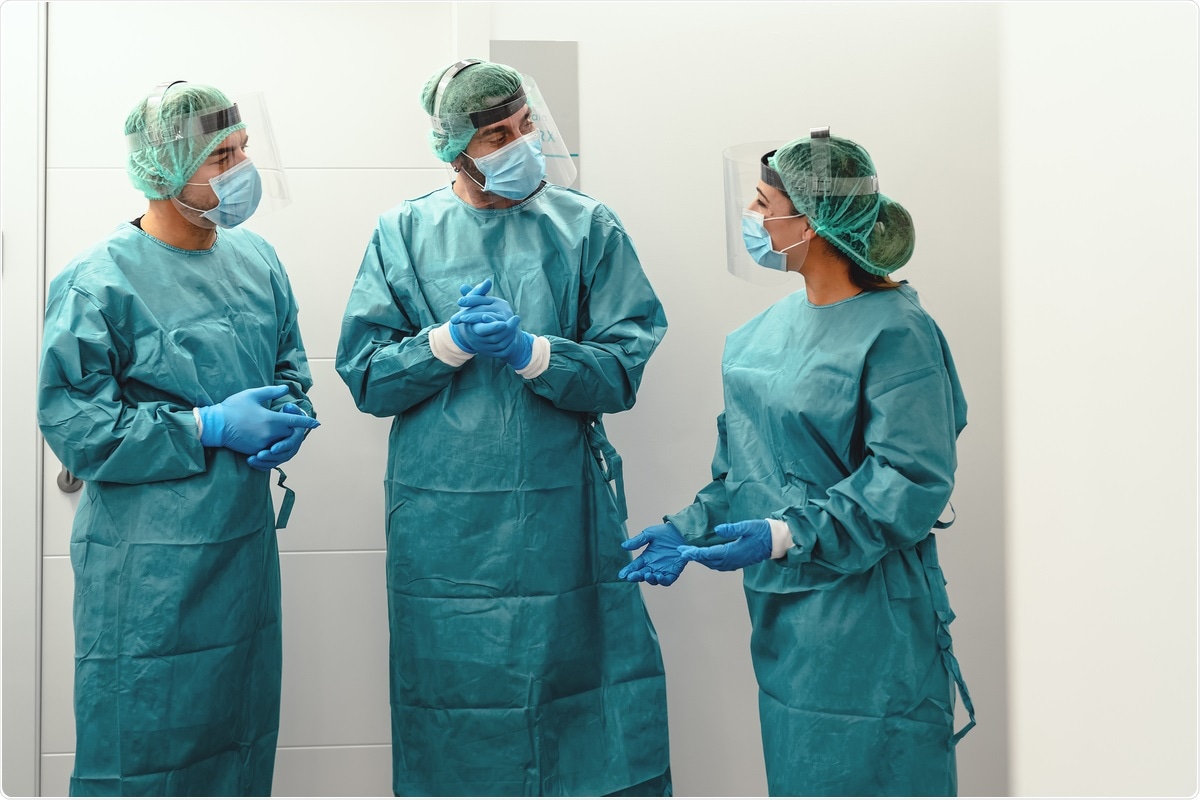Severe adverse reactions were reported after the AstraZeneca ChAdOx1-S-nCoV-19 vaccine (ChAd). This prompted the European health authorities to recommend the preferred second dose to be Pfizer BNT162b2 vaccine (BNT) as a booster for patients under 55 who received the first dose of ChAd.
 Study: Immunogenicity and efficacy of heterologous ChadOx1/BNT162b2 vaccination. Image Credit: AlessandroBiascioli/ Shutterstock
Study: Immunogenicity and efficacy of heterologous ChadOx1/BNT162b2 vaccination. Image Credit: AlessandroBiascioli/ Shutterstock
A new study published in Nature revealed that the heterologous ChAd/BNT combination (as the first and second doses) confers better protection against severe acute respiratory syndrome coronavirus-2 (SARS-CoV-2) infection than the homologous BNT/BNT combination in a real-world observational study of healthcare workers (HCWs).
The study
This study entailed a longitudinal survey including 13,121 HCWs; the anti-spike immunity conferred by each vaccine combination was assessed. Here, data was extracted from the occupational medicine database of the University hospital of Lyon (Hospices Civils de Lyon, HCL), France.
It was noted that ten infections occurred among 2,512 individuals in the heterologous vaccination group, compared to 81 infections among 10,609 in the homologous vaccination group. The results depicted that both vaccine combinations induced strong anti-spike antibody (Ab) responses. However, sera from heterologous vaccinated individuals displayed a stronger neutralizing activity, regardless of the causative SARS-CoV-2 variant.
It was noted that this enhanced neutralizing potential was in line with increased frequencies of switched and activated memory B cells recognizing the SARS-CoV-2 Receptor Binding Domain (RBD). Meanwhile, ChAd induced a weaker IgG response but a stronger T cell response than the BNT after the first dose. Thus, the heterologous vaccination regimen may be suitable for immunocompromised individuals.
Multiple logistic regression model analyses revealed that age was not associated with the likelihood of acquiring infection. While the probability of being infected after vaccination significantly depended upon the vaccination regimen. It was found that individuals who received BNT/BNT were twice as likely to be infected as those who were given ChAd/BNT.
Additionally, the ability of serum samples to neutralize SARS-CoV-2 spike-pseudotyped viral particles was measured. The findings indicated neither of the sera displayed neutralizing activity before vaccination or after the first dose. Meanwhile, most elicited a neutralizing activity after the second dose; sera from the ChAd/BNT vaccinated patients displayed a higher neutralizing efficacy than those from the BNT/BNT vaccinated individuals.
The ability of the sera to prevent VeroE6 cell infection by SARS-CoV-2 isolates belonging to various Clades was tested. The ChAd/BNT vaccinated individuals exhibited 2.3-fold-to-3.6 higher serum neutralizing Ab titers against the different variants than individuals from the BNT/BNT group. These findings suggested that the neutralizing potential of Abs generated by heterologous vaccination is less affected by spike mutations appearing in Variants of Concern (VOCs) than that of Abs induced by homologous vaccination.
In addition, the T-cell response of vaccinees against RBD peptides was longitudinally monitored, using a whole blood interferon (IFN) γ release assay. The results showed that the T cell response was higher after ChAd immunization than after BNT priming and was similarly increased by BNT boost. Both vaccination regimens could trigger a progressive increase in the frequency of S-reactive CD4 and CD8 T cells from the pre-vaccine to the post-booster phase. Moreover, the heterologous combination resulted in a stronger CD4 T cell response, both after the primary dose and the booster, and an increasing trend of the CD8 T cell response after the booster dose.
Furthermore, the neutralizing Ab activity was associated with the S1 or RBD-specific IgG titers, irrespective of the variant analyzed and was not associated with IgA levels. These results indicated that better neutralizing Abs are produced from sustained B cell activation. Hence, the Abs quality underlies the superior neutralization potential of the Abs response induced by heterologous vaccination.
In addition, one study compared vaccination schedules with the same prime-boost interval. The findings showed that for short intervals, the humoral responses induced by both regimens were comparable. At the same time, a longer interval between the two doses could facilitate the synergy between heterologous vaccines.
Conclusion
The results of this study presented a real-world observational delineation of the heterologous ChAd/BNT regimen in HCWs. The results confirmed that such modification confers stronger protective immunity than the homologous BNT/BNT prime-boost schedule. Yet confirmatory studies and a longer follow-up are recommended to establish the above findings and refute confounding factors, for instance – different levels of exposure to the virus among subjects.
The findings herein suggested that the heterologous ChAd/BNT combination could be particularly suitable for immune-compromised patients.
- Pozzetto, B., et al. “Immunogenicity and efficacy of heterologous ChadOx1/BNT162b2 vaccination”, Nature (2021), doi: 10.1038/s41586-021-04120-y
Posted in: Medical Science News | Medical Research News | Disease/Infection News
Tags: Antibody, Assay, B Cell, Blood, CD4, Cell, Coronavirus, Coronavirus Disease COVID-19, Efficacy, Frequency, Healthcare, Homologous, Hospital, immunity, Immunization, Interferon, Medicine, Peptides, Receptor, Respiratory, SARS, SARS-CoV-2, Severe Acute Respiratory, Severe Acute Respiratory Syndrome, Syndrome, T-Cell, Vaccine, Virus

Written by
Nidhi Saha
I am a medical content writer and editor. My interests lie in public health awareness and medical communication. I have worked as a clinical dentist and as a consultant research writer in an Indian medical publishing house. It is my constant endeavor is to update knowledge on newer treatment modalities relating to various medical fields. I have also aided in proofreading and publication of manuscripts in accredited medical journals. I like to sketch, read and listen to music in my leisure time.
Source: Read Full Article